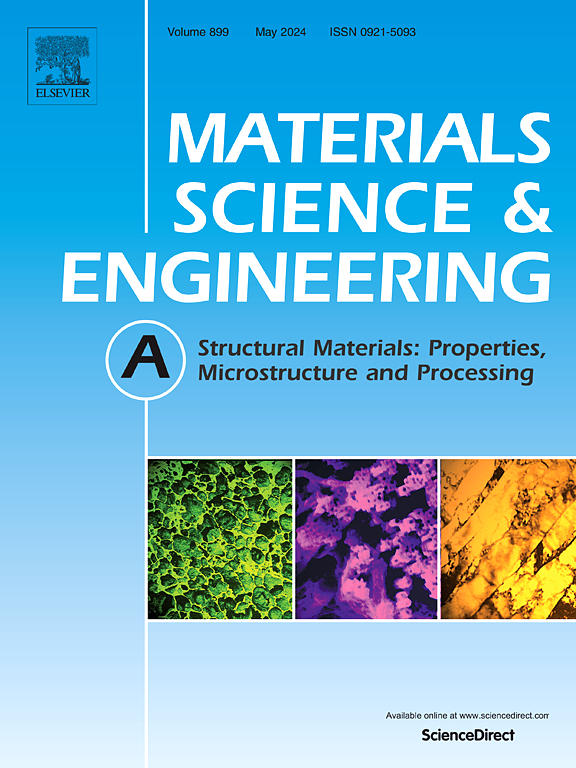Microstructural evolution and impact properties of vacuum laser welded near-alpha Ti-6Al-3Nb-2Zr-1Mo titanium alloy: Effect of base metal microstructure
IF 6.1
2区 材料科学
Q1 MATERIALS SCIENCE, MULTIDISCIPLINARY
引用次数: 0
Abstract
The advancement of high-power laser welding has significantly improved the penetration capability for welding titanium and its alloys. In this study, four 25 mm-thick near-alpha Ti-6Al-3Nb-2Zr-1Mo titanium alloy plates with two distinct base metal microstructures (equiaxed and bimodal) were welded using vacuum laser beam welding. The microstructure evolution and impact properties of the laser welded joints were investigated. The results show that the impact toughness of the weld zone, heat affected zone, and base metal in joints with bimodal base metal is higher than that in joints with equiaxed base metal. The lowest impact toughness for the joints with bimodal base metal is in the weld zone, which is 41.63 J, owing to the formation of abundant acicular α′ martensite. For the joints with equiaxed base metal, the impact toughness of the weld zone is comparable with that of the base metal, which is attributed to a more tortuous crack propagation path. The microstructure of the base metal significantly influences the microstructure evolution of the joints. In joints with bimodal base metal, the grain size of the primary β in the weld zone is larger due to fewer nucleation sites in the heat affected zone near the fusion line. This results in the formation of thicker acicular α’ martensite, which enhances twin generation and dislocation movement, thus increasing the absorbed impact energy and impact toughness.
真空激光焊接近α Ti-6Al-3Nb-2Zr-1Mo钛合金的组织演变及冲击性能:母材组织的影响
大功率激光焊接技术的发展,极大地提高了钛及其合金焊接的熔透能力。本研究采用真空激光束焊接4块25 mm厚的近α Ti-6Al-3Nb-2Zr-1Mo钛合金板,分别具有两种不同的母材组织(等轴和双峰)。研究了激光焊接接头的组织演变和冲击性能。结果表明:双峰母材接头的焊缝区、热影响区和母材的冲击韧性均高于等轴母材接头;双峰母材接头的冲击韧性在焊缝区最低,为41.63 J,主要是由于形成了丰富的针状α′马氏体。等轴母材连接时,焊缝区的冲击韧性与母材相当,这是由于裂纹扩展路径更为曲折所致。母材的微观组织对接头的微观组织演化有显著影响。在双峰母材接头中,由于熔合线附近热影响区内的形核位点较少,焊缝区初生β的晶粒尺寸较大。这使得针状α′马氏体的形成变厚,促进了孪晶的生成和位错的移动,从而提高了吸收的冲击能和冲击韧性。
本文章由计算机程序翻译,如有差异,请以英文原文为准。
求助全文
约1分钟内获得全文
求助全文
来源期刊

Materials Science and Engineering: A
工程技术-材料科学:综合
CiteScore
11.50
自引率
15.60%
发文量
1811
审稿时长
31 days
期刊介绍:
Materials Science and Engineering A provides an international medium for the publication of theoretical and experimental studies related to the load-bearing capacity of materials as influenced by their basic properties, processing history, microstructure and operating environment. Appropriate submissions to Materials Science and Engineering A should include scientific and/or engineering factors which affect the microstructure - strength relationships of materials and report the changes to mechanical behavior.
 求助内容:
求助内容: 应助结果提醒方式:
应助结果提醒方式:


